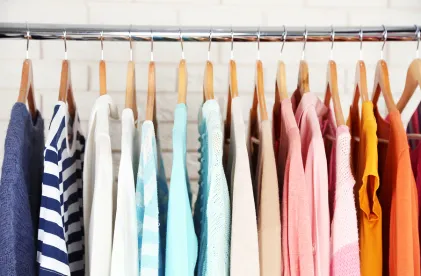The fashion industry has recently been flexing its clout and cache to combat climate change. Who else is using a heavy hand in the fight against climate change? The answer, while not as surprising, is the White House. With a common goal, it has been an inspiring journey for these two unlikely allies.
With his second term winding down in 2016, President Barrack Obama has focused on a comprehensive legacy-enhancing fight against the threat of climate change. In 2013, the President announced his Climate Action Plan, in which he tasked his administration to reduce carbon pollution, increase energy efficiency, expand renewable and other low-carbon energy sources, and strengthen the country’s resilience to extreme weather and other climate change impacts. When fully implemented, the Climate Action Plan will cut nearly six billion tons of carbon pollution through 2030. Last month, December 2015, a climate change agreement was reached at the 21st Conference of Parties in Paris.
Along with decisive steps the federal government has taken to combat climate change, hundreds of private companies, local governments, and foundations have also stepped up to increase energy efficiency, boost low-carbon investing, and make solar energy more accessible to low-income Americans. As a part of the Climate Action Plan, the White House launched the American Business Act on Climate Pledge (Business Climate Pledge). In July 2015, Secretary of State John Kerry and senior White House officials hosted thirteen of America’s largest companies that committed to the Business Climate Pledge, including: Alcoa, Bank of America, Berkshire Hathaway Energy, Cargill, General Motors, Goldman Sachs, PepsiCo, UPS and Walmart – just to name a few![1]
As of October 19, 2015, more than 68 additional companies have taken the Business Climate Pledge, including many big players in the fashion industry: Nike, Levi Strauss & Co., Target Corp. and L’Oreal USA.
As part of the Business Climate Pledge, Levi Strauss & Co. has committed to:
-
Reduce its greenhouse gas (GHG) emissions 25% in office, retail and distribution locations by 2020.
-
Reduce its GHG emissions 5% annually per product shipped from owned and operated manufacturing plants.
-
Purchase a minimum of 20% of its energy from renewable sources by 2020.
-
Ensure that no forest-based materials that originate from the world’s ancient and endangered forests enter into its supply chain by 2020.
As part of the Business Climate Pledge, L’Oreal USA has committed by 2020 to:
-
Reduce its CO2 emissions at plants and distribution centers by 60%, from a 2005 baseline.
-
Reduce its water consumption by 60% per finished product unit, from a 2005 baseline.
-
Reduce its waste by 60% per finished product unit, from a 2005 baseline.
-
Send zero waste to landfill.
-
Reduce its CO2 emissions from transportation of products by 20% per finished product unit, from a 2011 baseline.
-
Source 100% renewable raw materials from sustainable sources.
L’Oreal USA also confirmed its “Zero Deforestation” commitment by 2020, which includes:
-
100% of its palm supply will be free from deforestation.
-
100% of its board and paper for packaging and promotional material will be certified recycled paper.
As part of the Business Climate Pledge, Nike has committed to:
-
Reach 100% renewable energy in owned or operated facilities by 2025.
-
Reduce its energy consumption over a ten-year period in a majority of owned or operated facilities within the U.S. portfolio by 20%.
-
Develop and scale a new palette of more sustainable materials.
Since 2010, Target has reduced GHG by 9% and eliminated the equivalent of 550,000 metric tons of CO2 across its building portfolio. To further advance the Business Climate Pledge, Target has established the following goals:
-
Achieve ENERGY STAR certification in 80% of its buildings by 2020, thereby eliminating 9,000 metric tons of GHG emissions from their stores.
-
Using a 2010 baseline, achieve a 10% reduction in energy intensity-per-square-foot by 2020 for its stores, thereby eliminating 271,500 metric tons of GHG emissions from stores.
-
Using a 2010 baseline, increase the number of solar rooftop panels by over 2000%, or to 500 stores and distribution centers by 2020.
-
Expand investment in offsite renewable energy to complement onsite renewables.
-
Drive implementation of hydrofluorocarbon (HFC) free refrigerants in food distribution centers and stand-alone refrigerated display cases.
-
Using a 2010 baseline, reduce water use by 10% per square foot for its stores by 2020.
-
Divert 70% of retail waste from landfill through reuse or recycle programs by 2020
-
Engage additional vendors and product categories in Target’s Clean by Design program. The program includes initiatives its supply chain can implement to reduce wastewater effluent, water use, energy and emissions around the world.
The Business Climate Pledge is not the fashion industry’s first foray into combating global climate change. Since 2007, many fashion designers and celebrities have paired with the Green Carpet Challenge, headed by Eco-Age, a brand consultancy founded by Livia Firth (wife of actor Colin Firth). The Green Carpet Challenge is “pairing glamour and ethics to raise the profile of sustainability, ethics and social welfare.” The Green Carpet Challenge has collaborated with iconic design houses and designers such as Gucci, Stella McCartney, L’Wren Scott, Moschino, Sergio Rossi, Prada, Giorgio Armani, Victoria Beckham, and Chopard[2] to create red carpet-ready sustainable designs seen worldwide at events such as the Golden Globes and Cannes Film Festival. Stars like Emma Watson, Drew Barrymore, Cameron Diaz, Meryl Streep, Alexa Chung, Cate Blanchet and Rita Ora have all proudly rocked sustainable frocks and baubles at these and other star-studded events. Other designers such as Eileen Fisher have embraced sustainable designs with the Vision 2020 Collection.
Fashionistas everywhere are keeping their eyes peeled to see what green fashion Hollywood’s finest will be wearing on the red carpet in the upcoming awards season.
[1] For a full list of participating businesses and a description of each company’s proposed actions to advance its commitment under the Business Climate pledge.
[2] For a full list of Green Carpet Challenge Collaborations.



 />i
/>i
